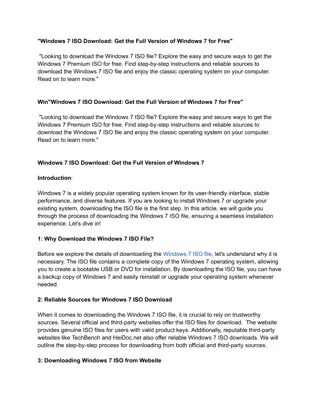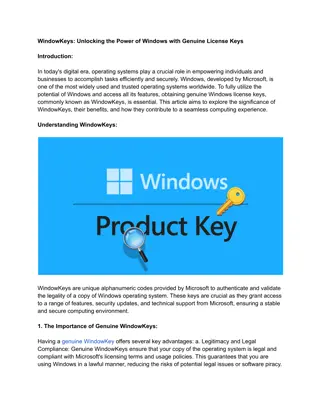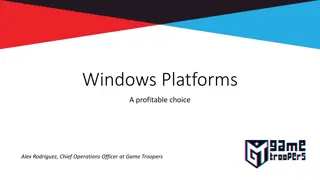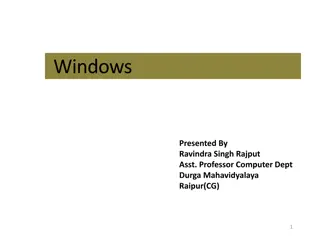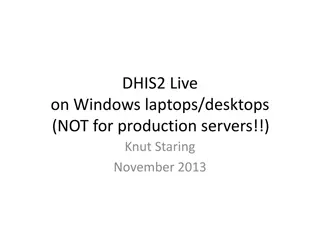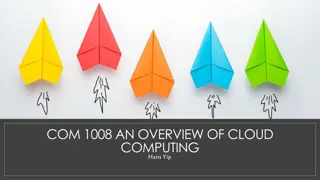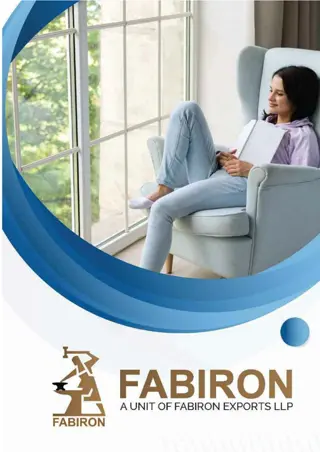Process Windows and System Behavior Exploration
This content delves into the concept of process windows, revealing the inner workings of system behavior through diverse scenarios and transitions. It showcases the interplay between windows and system elements, offering insights into modeling and analysis techniques.
Download Presentation

Please find below an Image/Link to download the presentation.
The content on the website is provided AS IS for your information and personal use only. It may not be sold, licensed, or shared on other websites without obtaining consent from the author.If you encounter any issues during the download, it is possible that the publisher has removed the file from their server.
You are allowed to download the files provided on this website for personal or commercial use, subject to the condition that they are used lawfully. All files are the property of their respective owners.
The content on the website is provided AS IS for your information and personal use only. It may not be sold, licensed, or shared on other websites without obtaining consent from the author.
E N D
Presentation Transcript
Process Windows Andrey Mokhov, Jordi Cortadella, Alessandro de Gennaro June 2017, Zaragoza
Part I: Motivation and Main Idea
Once upon a time there was a transition system... it lacked persistency, but had a few nice diamonds.
Ouch! Can you understand this Petri net?
Idea: Keep the diamonds, remove non-persistency
Aha, these are just marked graphs, but what do they mean?
These are windows showing parts of the system behaviour.
Each window covers a part of the system behaviour, i.e. a scenario. Each transition is covered by at least one window.
The initial state is covered by both windows. Firing c is only possible in the second window, hence the first one becomes inactive.
In s1 the first window is active. When a and x fire (in any order), the second window wakes up.
In s4 both windows are active and b can be fired in both of them.
Note: when a window wakes up it must be correctly initialised with a wake-up marking.
Direct synthesis Window decomposition Which description do you prefer?
Part II: Automated Window Decomposition
Windows Decomposition Problem Given: A labelled transition system L A set of desired structural properties, e.g. forward and backward persistence, determinism, connectedness... Result: A set of windows W1 Wn, such that L = W1 Wn Each window Wk satisfies the structural properties Wake-up condition c and marking m for each window
Implementation (sketch) Discovering windows: Inspired by Javier de San Pedro and Jordi Cortadella (2016) SAT formulation: one Boolean variable per transition Desired structural properties are Boolean constraints Successively discover largest possible windows Deriving wake-up conditions and markings: Build a wake-up truth table: one row per state Perform Boolean minimisation (see paper for details)
Part III: Applications
Asynchronous power management controller
Petri net model synthesised from the underlying transition system
Synthesised Petri net Discovered process windows
Process windows A new approach to representing complex processes Automated discovery of windows with desirable structural properties, such as marked graphs Implemented in Workcraft toolkit (ask for a demo!) Future research Beyond choice-free scenarios Exploit the structure for efficient process analysis Circuit synthesis


